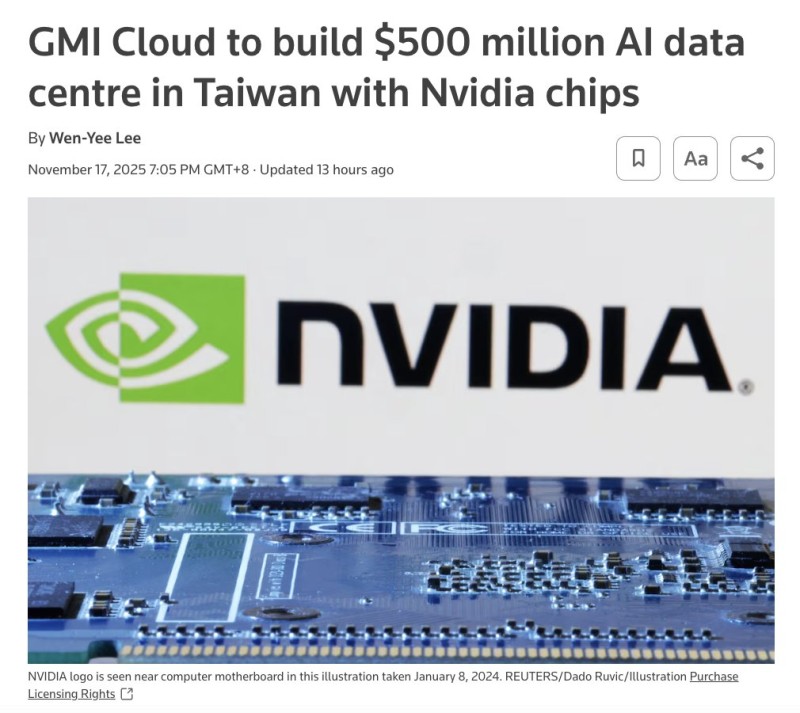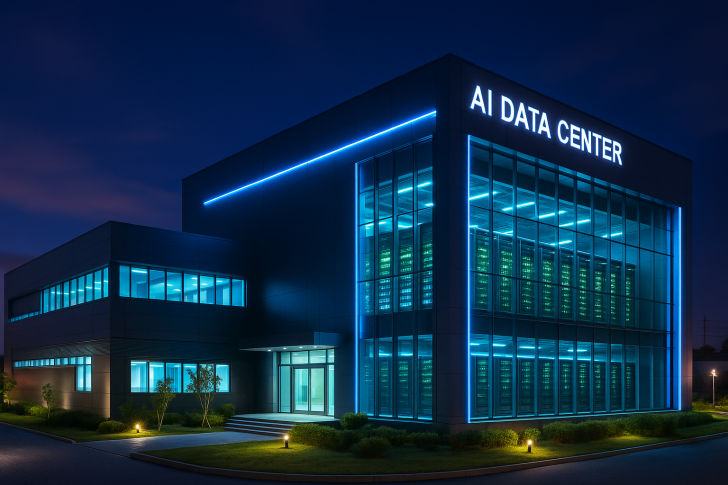⬤ GMI Cloud just announced a massive $500 million AI data center project in Taiwan, and it's shaping up to be one of the biggest infrastructure plays in the region. The facility will run on Nvidia's latest Blackwell GB300 GPUs and is expected to be fully operational by March 2026. This isn't just another data center—it's specifically designed for high-density AI workloads, the kind that power the next generation of machine learning models and enterprise AI applications. The project signals how serious companies are getting about building out dedicated infrastructure to handle the computational demands of modern AI systems.

⬤ Here's what makes this facility stand out: it'll house 7,000 Nvidia GB300 GPUs spread across 96 high-density racks, capable of processing nearly 2 million tokens per second. That's serious computational firepower. The center will consume 16 megawatts of power, which gives you a sense of just how energy-intensive these AI operations have become. By using Nvidia's newest Blackwell architecture, GMI Cloud is positioning itself to deliver cutting-edge performance for clients who need top-tier AI compute resources. The technical specs alone show this is built for scale and speed.
⬤ GMI Cloud has already lined up an impressive roster of initial customers, including Nvidia itself, Trend Micro, Wistron, TECO, VAST Data, and Chunghwa System Integration. The total contract value for the project is projected to hit $1 billion, which tells you there's genuine commercial demand backing this investment. But Taiwan isn't the only focus—the company is also planning a 50-megawatt AI facility in the United States and has hinted at going public within the next two to three years. It's clear they're thinking big and planning for global expansion.
⬤ This project is part of a larger trend across the tech industry: companies are racing to build out AI infrastructure as computational needs skyrocket. With 7,000 GPUs, billion-dollar contracts, and additional facilities on the horizon, GMI Cloud is making a serious bet on the future of AI compute. The move intensifies competition in the cloud and data center markets and reinforces how critical next-generation GPU clusters are becoming for enterprise AI adoption. As demand continues to grow, expect to see more investments like this shaping the landscape.
 Usman Salis
Usman Salis

 Usman Salis
Usman Salis


